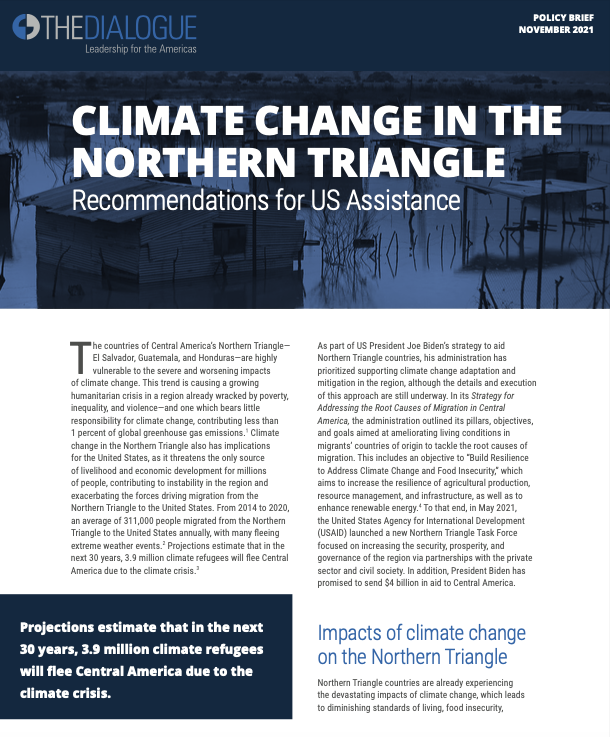Bolivia & the Global Fight Against Climate Change
In the past year, the Bolivian government has emerged as an outspoken critic of climate change policies.
This post is also available in: Español
The countries of Central America’s Northern Triangle—El Salvador, Guatemala, and Honduras—are especially vulnerable to the severe and worsening impacts of climate change. This trend is causing a growing humanitarian crisis in a region already wracked by poverty, inequality, and violence—and one which bears little responsibility for climate change, contributing less than 1 percent of global greenhouse gas emissions. Climate change in the Northern Triangle also has implications for the United States, as it threatens the livelihood and only source of economic development for millions of people, contributing to instability in the region and exacerbating the forces driving migration from the Northern Triangle to the United States.
This policy brief, the first in a series of three publications, describes the main challenges and provides broad recommendations for the US strategy on climate change adaptation in the region. It is based on inputs from the Task Force on Climate Change in the Northern Triangle, coordinated by the Inter-American Dialogue.
In the past year, the Bolivian government has emerged as an outspoken critic of climate change policies.
As global temperatures continue to rise with the global community stalled on any way to stop them, countries must prepare to adapt to increasingly volatile environmental conditions.
Will Central American governments spend the money effectively? Do the countries in the isthmus have a good plan to fight the drug cartels?
